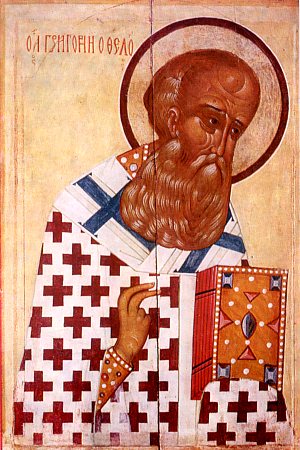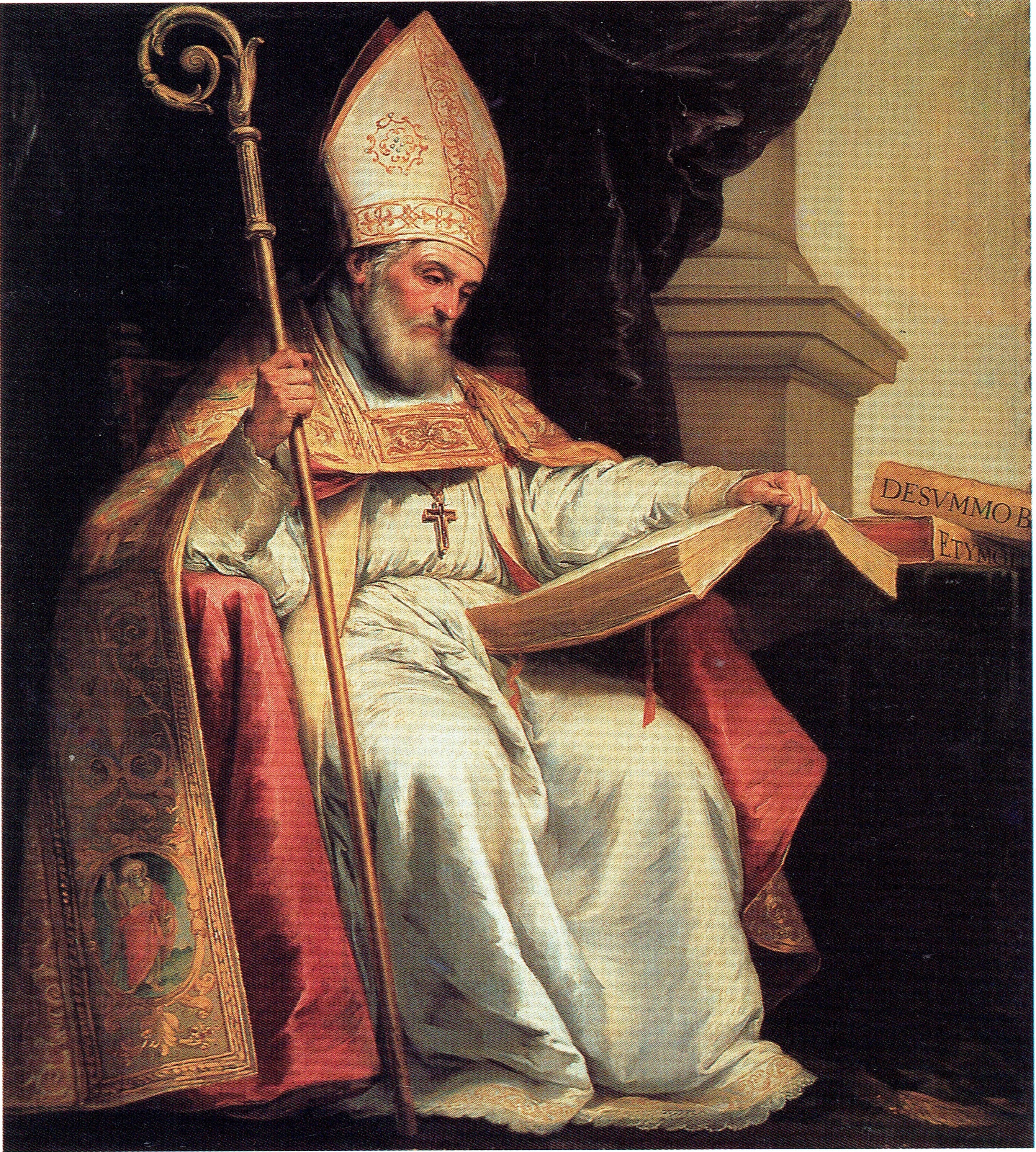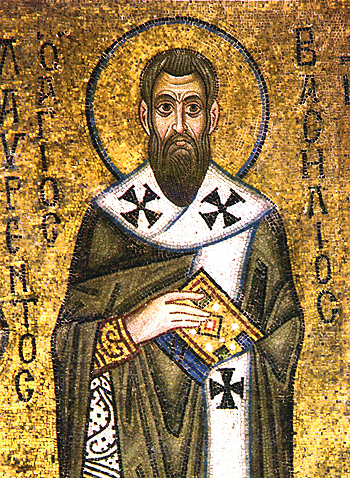|
Nazianzus
Nazianzus or Nazianzos (), also known as Nandianulus, was a small town of ancient Cappadocia, and in the late Roman province of Cappadocia Tertia, located 24 Roman miles to the southeast of Archelais. In the Jerusalem Itinerary it is miswritten as Nathiangus. History Its history in antiquity is unknown. It became the Turkish village of Nenizi east of Aksaray (formerly Archelais), in the Ottoman villayet of Koniah, but has sometimes been wrongly identified with ''Diocaesarea''. Modern scholars locate its site near Nenezigözü, Asiatic Turkey. More specifically, the village of Bekarlar, Gülağaç. Ecclesiastical history At the beginning of the 4th century Nazianzus was suffragan to Caesarea Mazaca; under Emperor Valens it formed part of Cappadocia Secunda, the metropolis of which was Tyana. Later it became part of Cappadocia Tertia and depended on its Metropolitan of Mocessus. Finally, it became a metropolitan see under Diogenes. In 1370 it was united to the metrop ... [...More Info...] [...Related Items...] OR: [Wikipedia] [Google] [Baidu] |
Gregory Of Nazianzus
Gregory of Nazianzus (; ''Liturgy of the Hours'' Volume I, Proper of Saints, 2 January. – 25 January 390), also known as Gregory the Theologian or Gregory Nazianzen, was an early Roman Christian theologian and prelate who served as Archbishop of Constantinople from 380 to 381. He is widely considered the most accomplished rhetorical stylist of the patristic age.McGuckin, John (2001), ''Saint Gregory of Nazianzus - An Intellectual Biography'', Crestwood, N.Y. As a classically trained orator and philosopher, he infused Hellenism into the early Church, establishing the paradigm of Byzantine theologians and church officials. Gregory made a significant impact on the shape of Trinitarian theology among both Greek and Latin-speaking theologians, and he is remembered as the "Trinitarian Theologian". Much of his theological work continues to influence modern theologians, especially in regard to the relationship among the three Persons of the Trinity. Along with the brothers Bas ... [...More Info...] [...Related Items...] OR: [Wikipedia] [Google] [Baidu] |
Doctor Of The Church
Doctor of the Church (Latin: ''doctor'' "teacher"), also referred to as Doctor of the Universal Church (Latin: ''Doctor Ecclesiae Universalis''), is a title given by the Catholic Church to saints recognized as having made a significant contribution to theology or doctrine through their research, study, or writing. , the Catholic Church has named 37 Doctors of the Church. Of these, the 18 who died before the East-West Schism, Great Schism of 1054 are also held in high esteem by the Eastern Orthodox Church, although it does not use the formal title ''Doctor of the Church''. Among the 37 recognised Doctors, 28 are from the West and nine from the East; four are women and thirty-three are men; one is an abbess, three are nuns, and one is a tertiary associated with a religious order; two are popes, 19 are bishops, twelve are priests, and one is a deacon; and 27 are from Europe, three are from Africa, and seven are from Asia. More Doctors (twelve) lived in the fourth century than any o ... [...More Info...] [...Related Items...] OR: [Wikipedia] [Google] [Baidu] |
Gregory Of Nazianzus The Elder
Gregory the Elder or Gregory of Nazianzus the Elder (Greek: Γρηγόριος ό Γέρος; – 374) was the bishop of the see of Nazianzus in Roman province of Cappadocia. However, he is better remembered as the patriarch of an important family of ecclesiastics. Career A member of the Hypsistarians, a distinct Jewish-pagan sect worshiping Hypsistos, the "Most High" God, Gregory was convinced to convert to Christianity by his wife Nonna in 325. Both Gregory and Nonna came from wealthy families, and Gregory was able to personally finance the construction of a church in the region. In 328, Gregory was selected as bishop of Nazianzus, a position he held until his death. At one point, Gregory subscribed to an Arian understanding of the Trinity. However, this was for a very brief time and he quickly renounced that position. Family Three children were born to Gregory and Nonna. One daughter, Saint Gorgonia outlived her parents by only a year, and was lauded in the eulogy giv ... [...More Info...] [...Related Items...] OR: [Wikipedia] [Google] [Baidu] |
Caesarius Of Nazianzus
Caesarius of Nazianzus (Greek: Καισάριος ό Ναζιανζήνος; c. 331 – 368) was a prominent physician and politician. He is best known as the younger brother of Gregory of Nazianzus. He is recognized as a saint in the Eastern Orthodox Church and the Roman Catholic Church. Biography The younger son of Gregory the Elder, bishop of Nazianzus, and his wife, Nonna, Caesarius was born at the family villa of Arianzus, near Nazianzus. He probably studied at Caesarea Mazaca in Cappadocia in preparation for the elite schools of Alexandria in Egypt. His favourite studies there were geometry, astronomy and especially medicine. In the last-named science, he surpassed all his fellow students. About 355 he came to the imperial capital Constantinople, and had already acquired a great reputation for his medical skill, when his brother Gregory, homeward bound from Athens, appeared there about 358. Caesarius sacrificed a remunerative and honourable post to return home with Greg ... [...More Info...] [...Related Items...] OR: [Wikipedia] [Google] [Baidu] |
Cappadocian Fathers
The Cappadocian Fathers, also traditionally known as the Three Cappadocians, were a trio of Byzantine Christian prelates, theologians and monks who helped shape both early Christianity and the monastic tradition. Basil the Great (330–379) was Bishop of Caesarea; Basil's younger brother Gregory of Nyssa (c. 335 – c. 395) was Bishop of Nyssa; and a close friend, Gregory of Nazianzus (329–390), became Patriarch of Constantinople. The Cappadocia region, in modern-day Turkey, was an early site of Christian activity. The Cappadocians advanced the development of early Christian theology, for example the doctrine of the Trinity, and are highly respected as saints in both Western and Eastern churches. Biographical background An older sister of Basil and Gregory of Nyssa, Macrina, converted the family's estate into a monastic community. Basil the Great was the oldest of Macrina's brothers, the second eldest being the famous Christian jurist Naucratius. Another brother, ... [...More Info...] [...Related Items...] OR: [Wikipedia] [Google] [Baidu] |
Hypsistarians
Hypsistarians, i.e. worshippers of the ''Hypsistos'' (, the "Most High" God), and similar variations of the term first appear in the writings of Gregory of Nazianzus (''Orat''. xviii, 5) and Gregory of Nyssa (''Refutation of Eunomius' Confession'' 38), about AD 374. The term has been linked to a body of inscriptions that date from around 100 AD to around 400 AD, mostly small votive offerings, but also including altars and stelae, dedicated to ''Theos Hypsistos'', or sometimes simply ''Hypsistos'', mainly found in Asia Minor (Cappadocia, Bithynia and Pontus) and the Black Sea coasts that are today part of Russia. Some modern scholars identify the group, or groups, with God-fearers mentioned in the ''Acts of the Apostles'', non-Jewish (gentile) sympathizers with Second Temple Judaism... Evidence Inscriptions and archeology A late 3rd century CE shrine in a wall of the ancient city of Oenoanda provides the strongest archaeological evidence for this cult. It is adorned with an in ... [...More Info...] [...Related Items...] OR: [Wikipedia] [Google] [Baidu] |
Archelais (Cappadocia)
Aksaray () is a city in the Central Anatolia region of Turkey. It is the seat of Aksaray Province and Aksaray District.İl Belediyesi Turkey Civil Administration Departments Inventory. Retrieved 12 January 2023. Its population is 247,147 (2021). In 2021 the province had an estimated population of 429,069 distributed over about . The average elevation is , with the highest point being Mt. Hasan ( Turkish: ''Hasan Dağı'') at . The city of Aksaray has a long history and was an important stopover point on the |
Bekarlar, Gülağaç
Bekarlar, recently known as ''Nenizi'' and in earlier times Nazianzus, is a village in the Gülağaç District, Aksaray Province, Turkey. Its population is 1,040 (2021). History The name of the village is mentioned as Nenezi in the records of 1928. It became a town on December 31, 1987 with the status of municipality. While it was previously affiliated to Çiftlik District in Niğde Province, with the decision on 19 June 1996, it was attached to Gülağaç District in Aksaray Province. Bekarlar's municipality status ended at the 2013 reorganisation, when the population dropped below 2000 people. '' Official Gazette
A gover ...
[...More Info...] [...Related Items...] OR: [Wikipedia] [Google] [Baidu] |
Ancient Cappadocia
Cappadocia (; , from ) is a historical region in Central Anatolia region, Turkey. It is largely in the provinces of Nevşehir Province, Nevşehir, Kayseri Province, Kayseri, Aksaray Province, Aksaray, Kırşehir Province, Kırşehir, Sivas Province, Sivas and Niğde Province, Niğde. Today, the touristic Cappadocia Region is located in Nevşehir Province, Nevşehir province. According to Herodotus, in the time of the Ionian Revolt (499 BC), the Cappadocians were reported as occupying a region from the Taurus Mountains to the vicinity of the Euxine (Black Sea). Cappadocia, in this sense, was bounded in the south by the chain of mountains that separate it from Cilicia, to the east by the upper Euphrates, to the north by the Pontus (region), Pontus, and to the west by Lycaonia and eastern Galatia. Van Dam, R. ''Kingdom of Snow: Roman rule and Greek culture in Cappadocia.'' Philadelphia: University of Pennsylvania Press, 2002, p.13 The name, traditionally used in Christianity, Chr ... [...More Info...] [...Related Items...] OR: [Wikipedia] [Google] [Baidu] |
Catholic Titular Sees In Asia
The Catholic Church (), also known as the Roman Catholic Church, is the largest Christian church, with 1.27 to 1.41 billion baptized Catholics worldwide as of 2025. It is among the world's oldest and largest international institutions and has played a prominent role in the history and development of Western civilization. O'Collins, p. v (preface). The church consists of 24 ''sui iuris'' (autonomous) churches, including the Latin Church and 23 Eastern Catholic Churches, which comprise almost 3,500 dioceses and eparchies around the world, each overseen by one or more bishops. The pope, who is the bishop of Rome, is the chief pastor of the church. The core beliefs of Catholicism are found in the Nicene Creed. The Catholic Church teaches that it is the one, holy, catholic and apostolic church founded by Jesus Christ in his Great Commission, that its bishops are the successors of Christ's apostles, and that the pope is the successor of Saint Peter, upon w ... [...More Info...] [...Related Items...] OR: [Wikipedia] [Google] [Baidu] |
Ecumenical Patriarch Of Constantinople
The ecumenical patriarch of Constantinople () is the List of ecumenical patriarchs of Constantinople, archbishop of Constantinople and (first among equals) among the heads of the several autocephalous churches that comprise the Eastern Orthodox Church. The ecumenical patriarch is regarded as the representative and spiritual leader of the Eastern Orthodox Christians worldwide. The term ''ecumenical'' in the title is a historical reference to the Ecumene, a Greek designation for the civilised world, i.e. the Roman Empire, and it stems from Canon 28 of the Council of Chalcedon. The patriarch's Episcopal see, see, the Ecumenical Patriarchate of Constantinople, is one of the most enduring institutions in the world and has had a prominent part in world history. The ecumenical patriarchs in ancient times helped in the spread of Christianity and the resolution of various doctrinal disputes. In the Middle Ages, they played a major role in the affairs of the Eastern Orthodox Church, as w ... [...More Info...] [...Related Items...] OR: [Wikipedia] [Google] [Baidu] |




